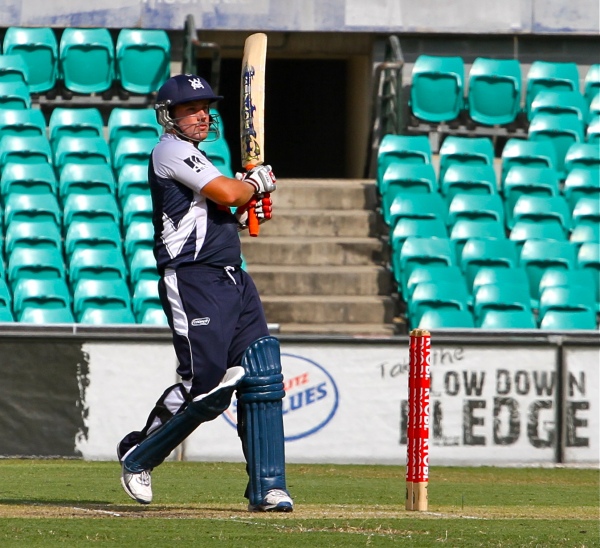|
 Setting a total in a one day match relies on the ability of a team to judge what a good score is on that day. It depends on conditions and relative team abilities, all of which need to be assessed from match to match. Setting a total in a one day match relies on the ability of a team to judge what a good score is on that day. It depends on conditions and relative team abilities, all of which need to be assessed from match to match.
Yet in club cricket, a total of 200 always comes up as the ‘magic’ score that will lead to inevitable victory.
But as this story shows, it’s not always as simple as racking up the big two oh oh.
It was the final day of the season. Our second team had to win away from home to avoid relegation. The opposition were stuck in mid-table, with nothing to play for but pride.
The captain decided we would bat first and set a target if we won the toss. When we arrived at the ground and inspected the pitch, it was damp with plenty of grass on top and looked like a bowler’s paradise. The captain stuck to his guns, he won the toss and decided to bat.
Our captain gave us some advice before we went out to bat.
“Keep it tight early on; the four first team players will bat 4, 5, 6 and 7 so they can press on for 200.”
Our wicketkeeper then says,
“We only scored 112 last season, and then we bowled them out for 90. It was a close game, but that wicket is tough to score on…”
The captain responds,
“But that was last season, this season we’ve got a better side, there’s more at stake and if we don’t get 200 they will knock off the runs easily.”
We had 50 overs to score 200 runs.
Our innings started slowly. The pitch had variable bounce. The outfield was long and had a damp feel to it. The ball was swinging, and it was difficult to get the ball off the square. I was dropped at cover point early on, and my opening partner was clean bowled in the eighth over. We were 12/1 after 8.4 overs. The captain was next in. He met me before facing his first delivery.
“What’s going on, we need to up the rate.”
I said the ball was not coming onto the bat, the pitch was two-paced and we were not getting any value for our shots.
After facing the next two overs, the captain agreed and said we should try to rotate the strike, without taking any undue risks. This seemed to be working well. We were 40/1 after 20 overs.
Suddenly, in the break between overs, the captain said we had “to go for it”. We had wickets in hand, and needed to attack.
The captain was caught at midwicket three balls later after top edging a pull shot. The first team players came and went within 30 minutes. We were 65/5 after 30 overs. The wicketkeeper was next into bat. He said the captain had given him a message to ask me to “hit out or get out”. I tried to hit the next ball back over the bowlers head, mistimed the shot, and was caught by the bowler. We ended up 73 all out after 34 overs.
The opposition had similar problems, but managed to reach the target with two wickets to spare.
We made some basic errors, and it cost us our place in the league.
So instead of thinking “200 or bust”, here are some tips for setting a target on a tough wicket:
- Learn what the ‘par’ score is from previous matches.
- Discuss a strategy before the game. Set a target in your head.
- Do not pin all your hopes on better first team players. It will cause the regular second team players to switch off and expect other people score runs or take wickets.
- Never be afraid to adjust the target.
- Encourage players to take responsibility and think for themselves.
- Never isolate any individual for negative criticism while they are still batting or bowling.Team spirit is vital.
- Smaller targets are more manageable and more effective than one large target for the whole innings.
- Don’t panic if your team is struggling to reach the pre-planned total. Calm, consistent reactions and reassessments will give other players on your team confidence. Mixed messages will cause confusion.
For more tips and advice on batting and bowling in club games, enrol on the online course “The Game Plan: How to Build a Winning Cricket Team” by Adrian Shaw.
image credit: SarahCanterbury
Discuss this article with other subscribers
|

.jpg)



.jpg)

